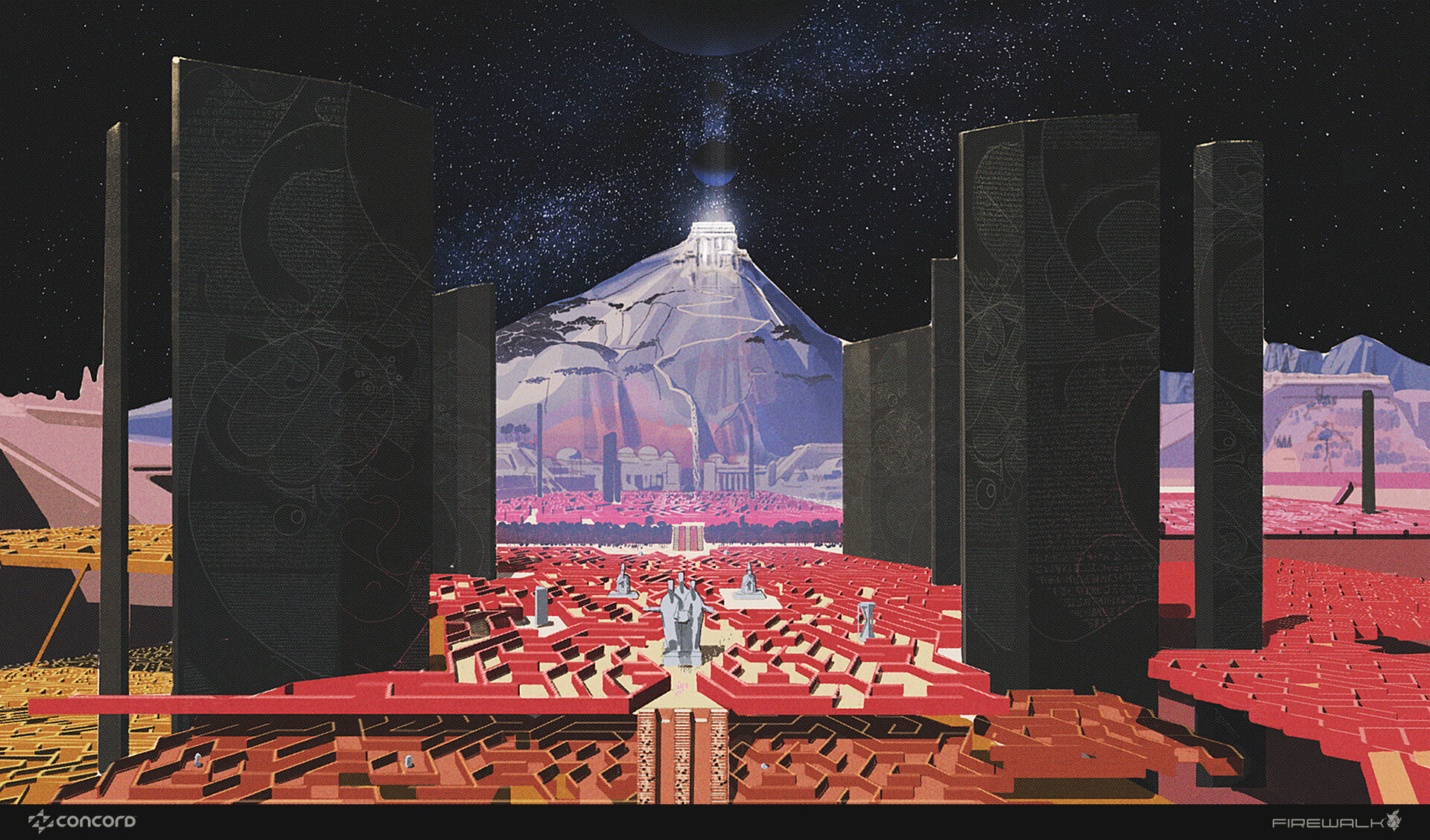Mixing illusion and reality using a combination 2D and 3D imagery
How one short video brings the worlds of 2D and 3D together.
The project Magician by Tom Jantol features a character, asleep in his four-poster bed, oblivious to the glowing conjurer who leaps from the world of the 2D television screen into the 'real' world of 3D. Combining these various elements meant using a number of programs – it’s not unusual to employ a multitude of tools in this way, with each one bringing its own strengths and efficiencies.
As a quick overview, for this project Jantol used iClone 7 to build and light the main bedroom scene and animate the sleeping character. Cartoon Animator 4 (or CTA for short) is used in conjunction with iClone to create the animated magician, ready for export to Adobe After Effects (AE). Some TV noise filters are applied in AE, and then the animated magician footage is cropped and trimmed using popVideo, and imported into the iClone scene ready for the final touches.
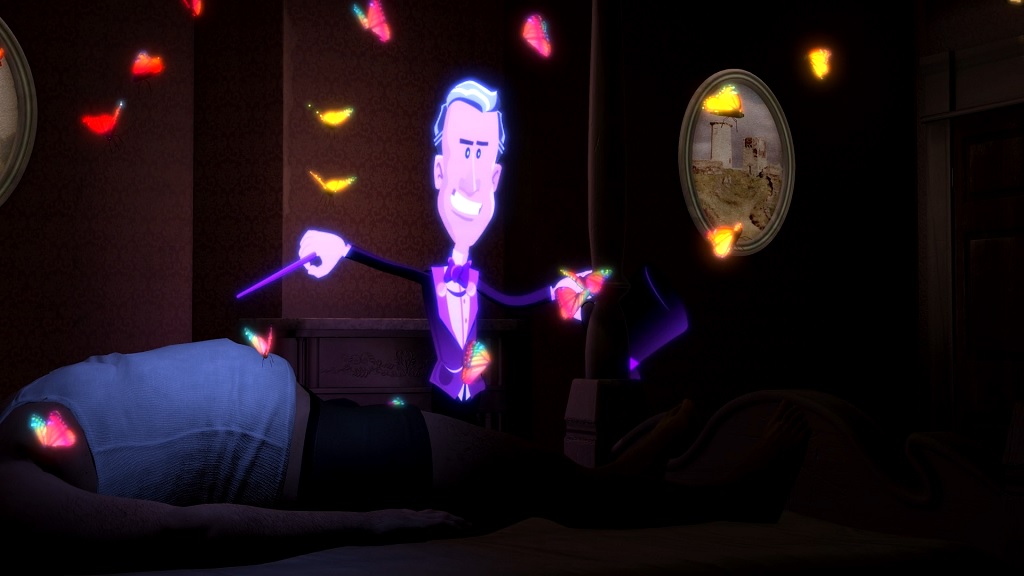
The first step is to build and light the bedroom scene in iClone 7. However, rather than spend ages crafting one from scratch, Jantol bought the bedroom from Reallusion’s store, which is full of affordable 3D assets. It’s then a simple case of adding some light sources for the lamps and a fill light, then tweaking the brightness and colour to make the scene suitably nighttime-looking and a bit spooky. iClone’s realtime visuals mean that feedback is instant: no continual tweaking and rendering to see the result of your edits.
Two flat planes are then created: one to hold a static background image for the TV and one for the magician character, which will be added later. The last job is to import a human figure from Reallusion’s Character Creator, and carefully pose his arms and legs so it looks like he’s lying on the bed.
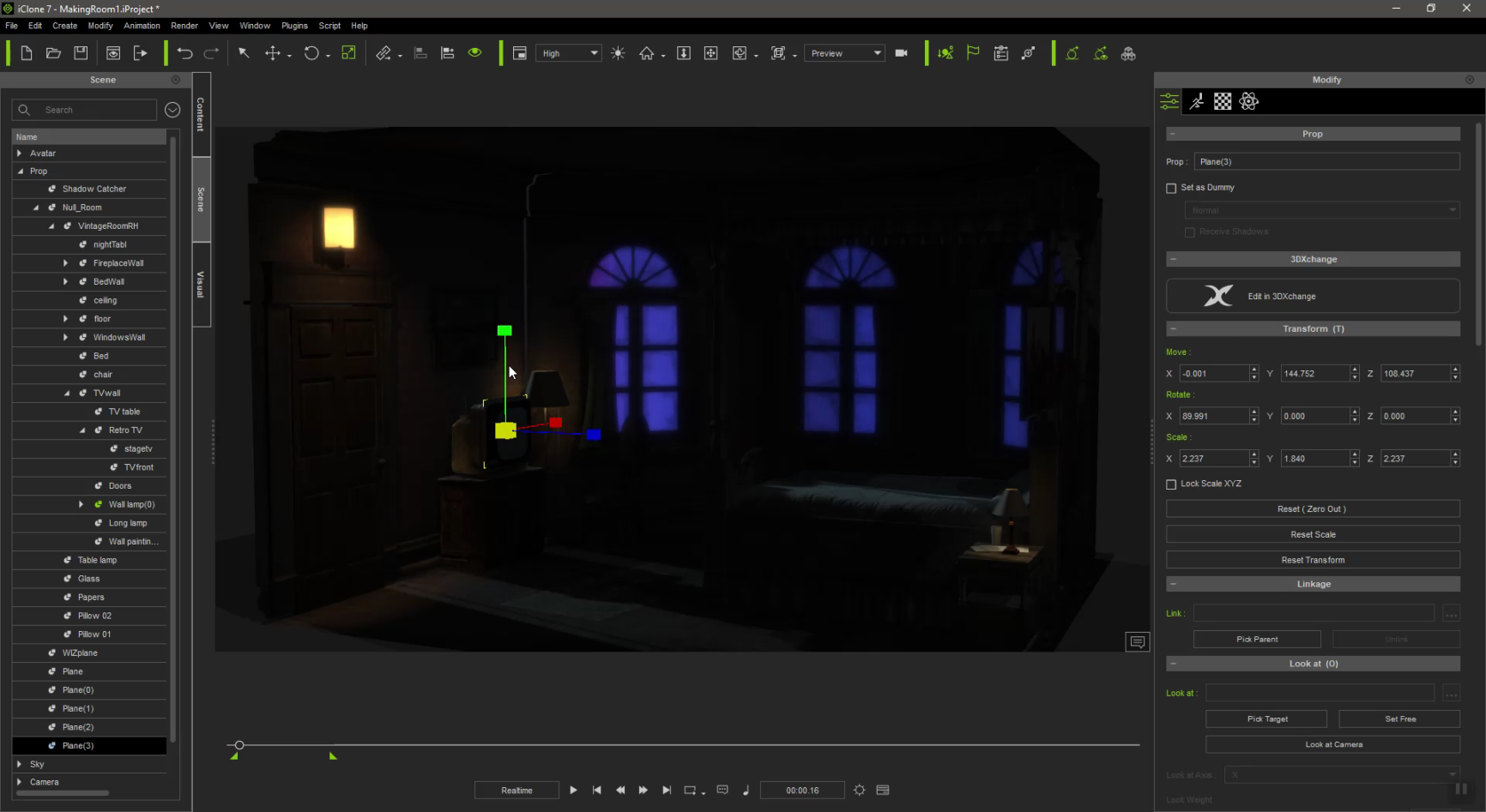
The 2D animation of the magician is created in CTA, but to make things easier, iClone and CTA are linked together using a plugin called Motion Link – now the two programs can talk to one another. This is where the magic really happens…
Traditional 2D character animation is painstaking, time-consuming work, requiring you to draw and colour subsequent frames to create the illusion of movement. But with the combo of CTA and iClone it’s dead easy. For CTA to work with iClone, you need a G3 character with a bone structure in place, just like you’d find in a rigged iClone figure – you can use one of several that come with the app, create your own, or buy one from the Reallusion store. There are hundreds to choose from and they’re not very expensive.
Now, with the two apps linked, any animation you apply to the 3D iClone character (a dummy figure will do) is reflected in the 2D character in CTA. It’s a bit like old-school rotoscoping, where you’d use film footage of a person moving to act as reference for your hand-drawn animation, but here it’s all done automatically thanks to Motion Link.
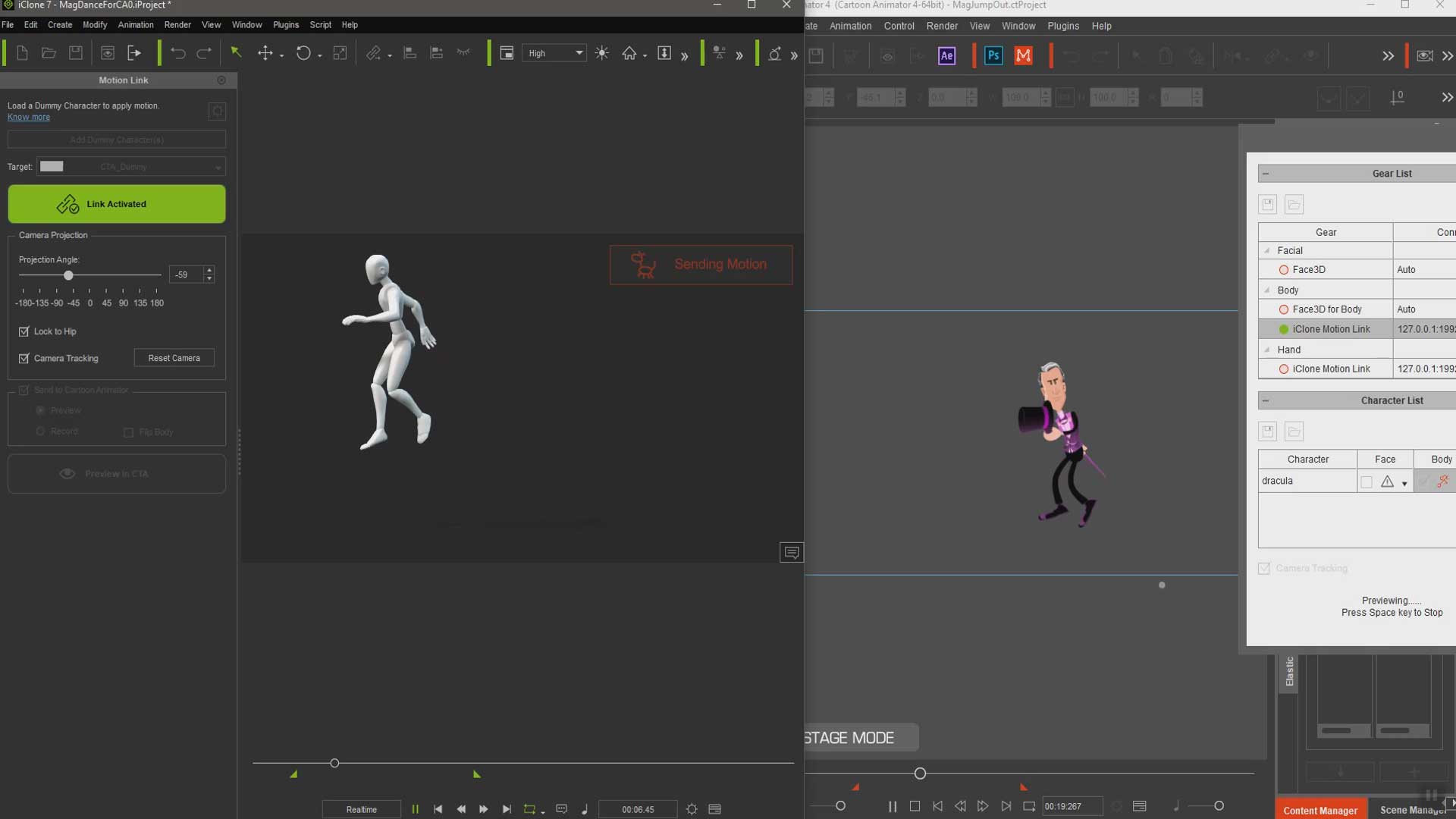
To imbue your character with movement, you can keyframe the iClone animation by hand, use one of the 300 pre-made motion files that come with the app, or buy one from the ActorCore store, where you’ll find hundreds of collections and individual motion files to suit any project.
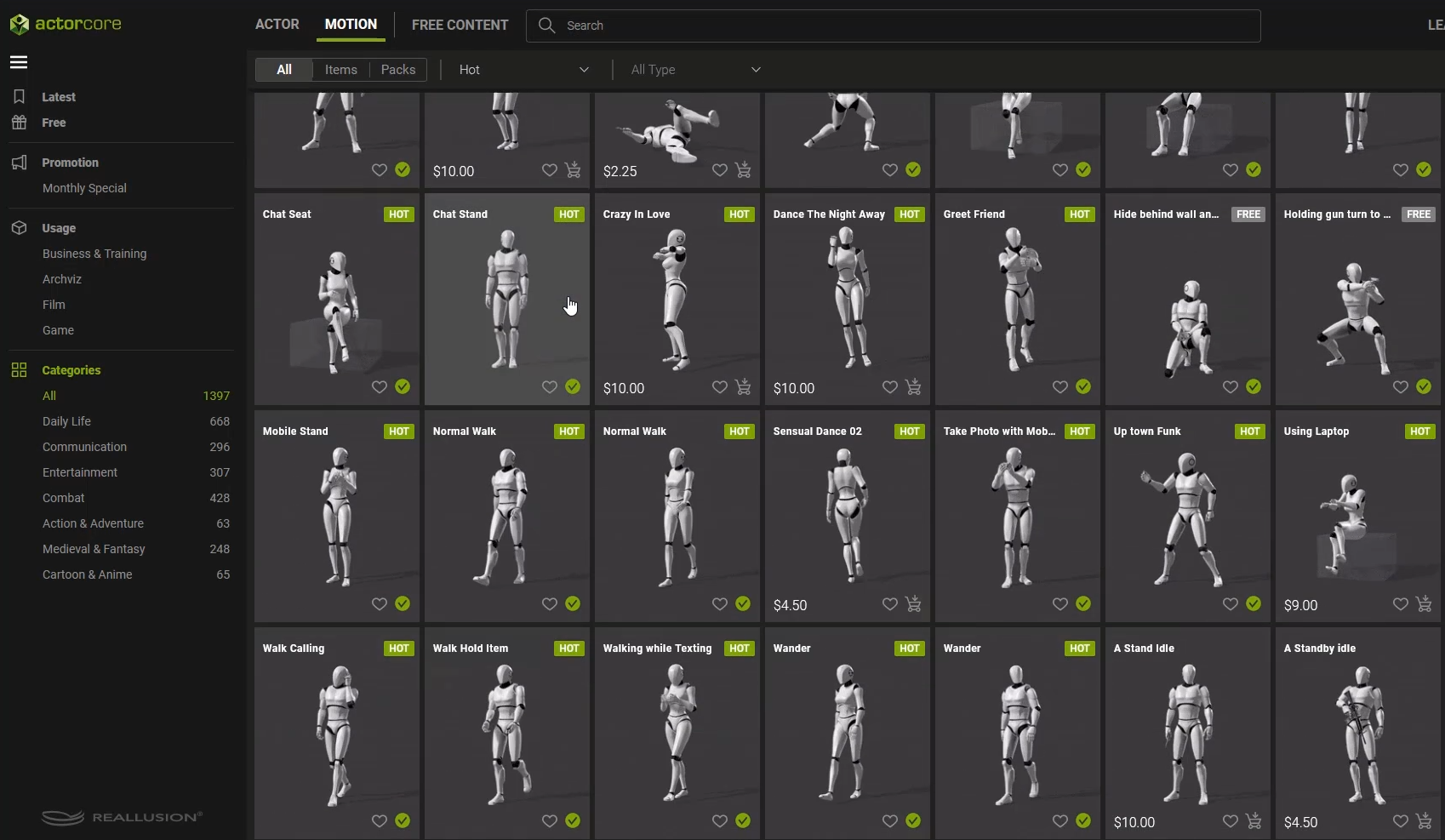
With the jumping animation of the magician complete, Jantol now renders it out and exports it to Adobe After Effects. To do this you can either use the CTA to AE plugin, or simply save the animation with an alpha channel – ie, a transparent background. Similarly, you can import the footage using the CTA to AE script, or just open the video file. CTA’s ability to export transparency makes it much easier to add effects or combine other elements later in the pipeline.
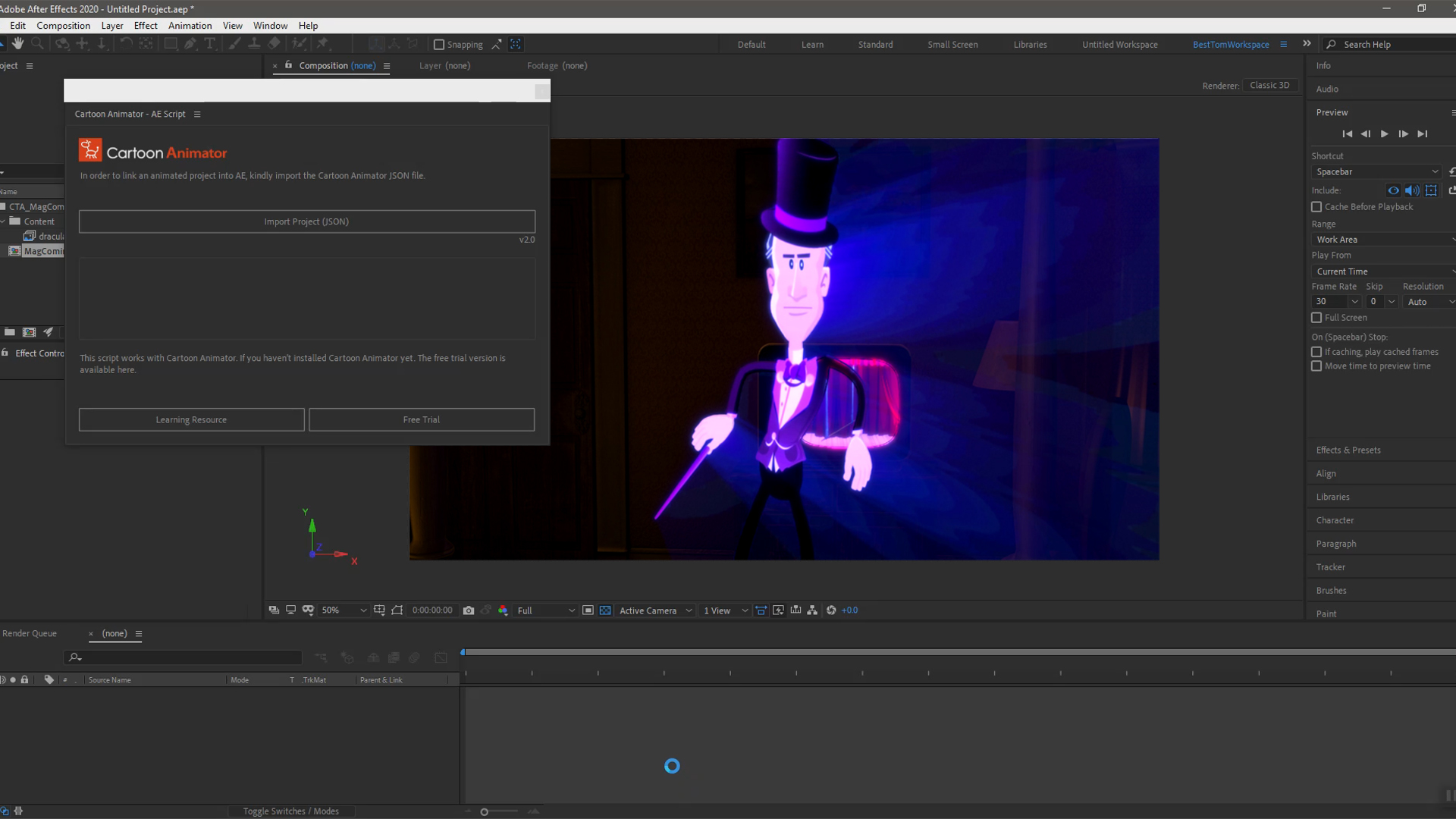
Adobe After Effects is a professional-level program designed for creating motion graphics, adding visual effects, doing colour grading and compositing elements together (live action video, CG animation, 2D graphics, particle effects etc). In this case Tom simply adds a TV-style noise filter and exports the footage as a PNG sequence.
The sequence is imported into popVideo where Jantol can crop in on the image and trim the sequence in length, removing any unwanted frames and reducing the file size. He then exports it with a transparent background, and It’s ready to use in iClone. popVideo is also useful for generating transparency from blue- and green-screen footage, adding masks, changing the resolution and timing of a clip, and even doing realtime 3D compositing,
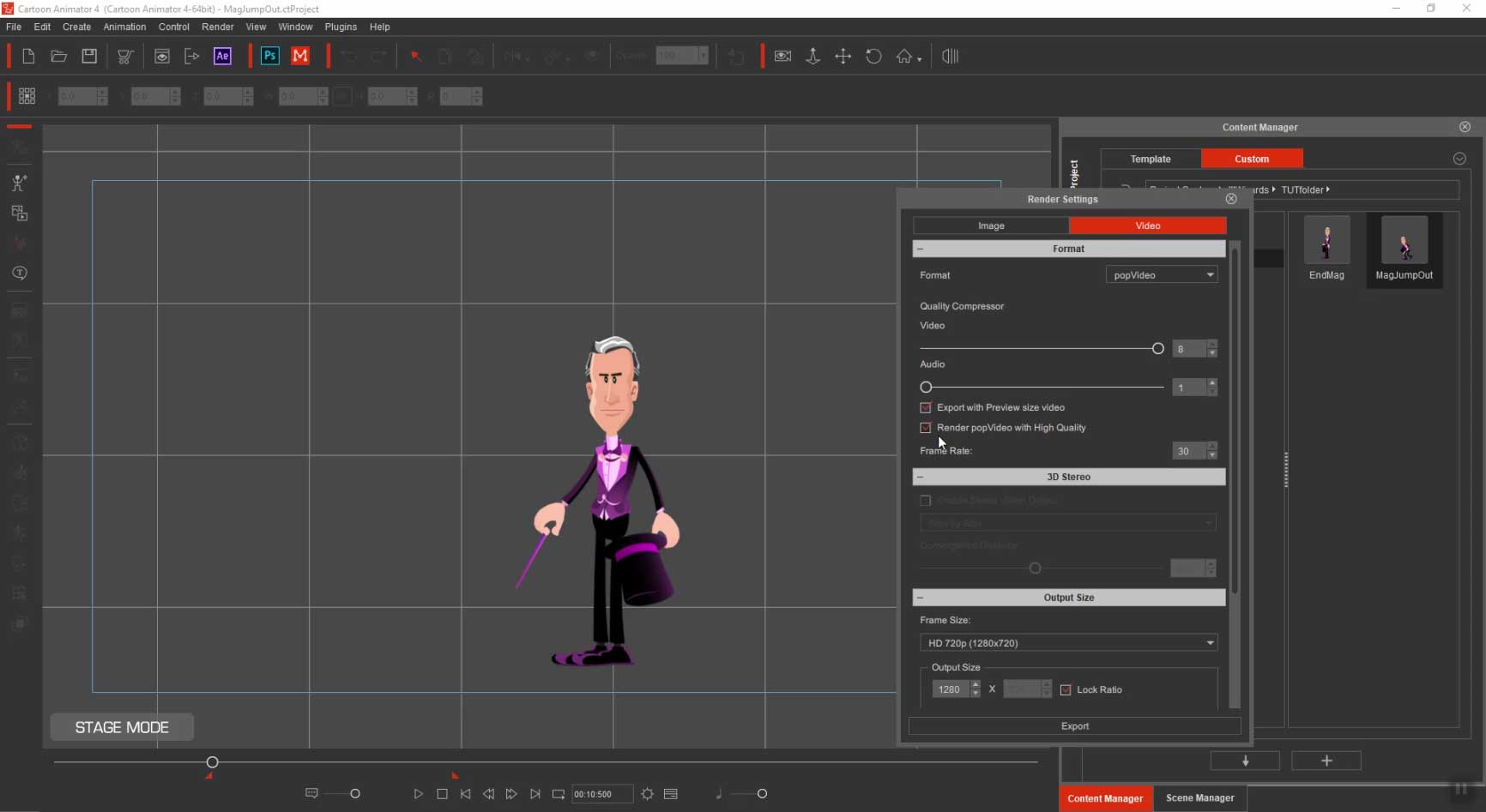
The popVideo file is mapped onto one of the planes created earlier, and made self-illuminating with an eery glow – all visible and editable in realtime. It’s now a case of animating the plane so the magician appears to jump out of the TV screen and grow in size as he lands in the room. Because the animation is attached to a plane, it exists in the 3D space of the room and can be positioned, scaled, rotated and keyframed just like any other object.
The last step is to animate the cameras, making cuts between them as you might in a TV studio. The magician also releases a swarm of multicoloured butterflies, which is easy to do using iClone’s built-in particle system. Jantol also adds a flickering light to imitate a real TV screen, as well as a subtle red glow on the wall, as if the butterflies are giving off their own light.
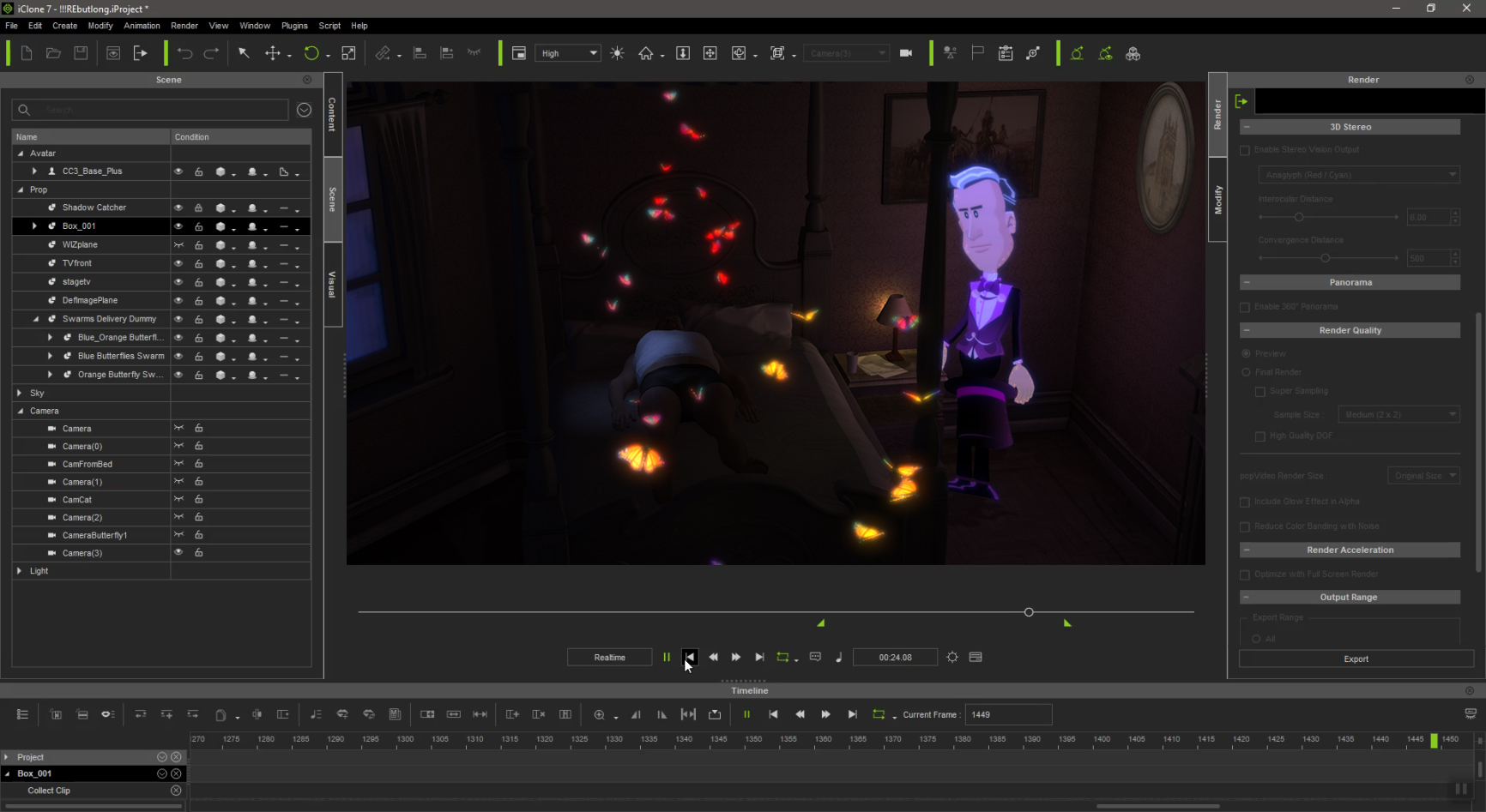
Even though the animation is quite short, you can see how complex the end result is, and how difficult and time-consuming it could potentially be to achieve if you had to build and animate everything by hand. By using the right tools in concert with one another, along with free or affordable assets, Jantol has managed to create a charming little short with the minimum of effort. And there’s nothing overly complex here that most video makers, illustrators and 2D/3D artists couldn’t get to grips with. With Reallusion’s suite of integrated apps – plus its extensive library of inexpensive assets – the only limit is time and your imagination.
Why not give these apps a go for yourself? Download the 30-day trial versions of Cartoon Animator and iClone and try them out today!

Thank you for reading 5 articles this month* Join now for unlimited access
Enjoy your first month for just £1 / $1 / €1
*Read 5 free articles per month without a subscription

Join now for unlimited access
Try first month for just £1 / $1 / €1
Get the Creative Bloq Newsletter
Daily design news, reviews, how-tos and more, as picked by the editors.

Steve has been interested in CG for many years. He was a regular contributor to 3D World and edited the magazine for two years, and has worked for other magazines including Edge, T3, Official UK PlayStation magazine, Laptop magazine and Windows Visa: The Official Magazine. For Creative Bloq, he mainly contributes tutorials and reviews creative kit.
